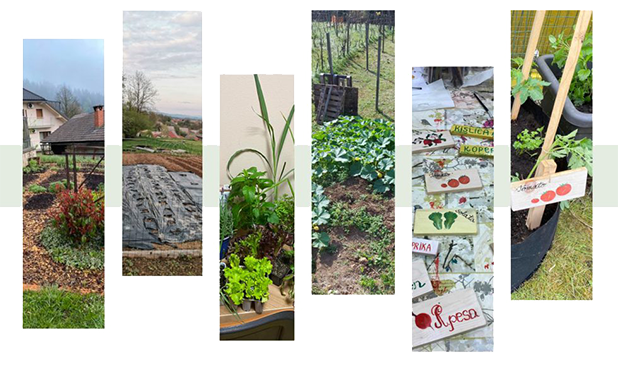Embracing self-subsistance

In the heart of modern Europe, a resurgence of a time-honored practice is taking root – self-sustenance agriculture. This movement marks a return to the basics, where individuals and communities cultivate their own food, connecting deeply with the land making this practice increasingly popular. It’s more than just planting seeds; it’s about planting hope for a sustainable, self-sufficient future. By nurturing our own gardens and orchards, we’re not just growing food; we’re growing a sense of independence and resilience.
Navigating Self-Subsistance Agriculture in Europe
(da Lončar S., Perdih F., Rotar I. 365 days of fresh vegetables from the home garden, 2017, pp. 9-17)
Despite its many virtues, self-sustenance agriculture in Europe faces its own set of challenges. Adapting to varied and changing climates, particularly in the face of global warming, poses a significant hurdle. European farmers and gardeners must also navigate the complexities of soil health, water availability, and sustainable pest control. Additionally, balancing modern life’s demands with the time and effort required for successful cultivation can be daunting. These challenges require innovative solutions, community support, and a willingness to learn and adapt, ensuring the flourishing of self-sustenance agriculture across Europe.
The Bountiful Benefits of Self-Cultivating
Embarking on the journey of self-cultivation brings a plethora of benefits. Not only does it provide fresh, organic produce right at your doorstep, but it also enhances mental and physical well-being. Gardening is a therapeutic activity, reducing stress and promoting a sense of accomplishment. It fosters a deeper connection with nature, enhancing environmental awareness and responsibility. Furthermore, self-cultivation contributes to local biodiversity and helps reduce carbon footprints. This practice isn’t just about growing food; it’s about growing healthier lifestyles and communities.
The Educational Value
One of the most enriching aspects of self-sustenance agriculture is its educational value. It offers a hands-on learning experience, teaching valuable skills such as planning, patience, and perseverance. For children and adults alike, it’s a wonderful way to understand the origins of food, the rhythm of the seasons, and the intricate ecosystems of nature. Schools and communities across Europe are integrating gardening projects into their curricula, fostering a new generation of environmentally conscious individuals. This education extends beyond the garden, encouraging a lifestyle that values sustainability, healthy eating, and respect for nature.
Collective Farming Initiatives
Self-sustenance agriculture has the unique power to build community bonds. Across European countries, community gardens and collective farming initiatives are sprouting up, bringing people together for a common cause. These spaces become more than just places to grow food; they are hubs of social interaction, cultural exchange, and mutual support. They provide opportunities for sharing knowledge, tools, and harvests, creating a sense of unity and cooperation. This community-driven approach not only enhances food security but also weaves a stronger social fabric in our neighborhoods.
The Role of Technology
In an age where technology touches almost every aspect of our lives, it also plays a crucial role in the success of self-sustenance agriculture. From smartphone apps that track planting seasons and water schedules to advanced composting techniques and eco-friendly pest control, technology is making gardening more accessible and efficient. Innovations in vertical farming and hydroponics are opening new possibilities for urban gardeners, making the most of limited spaces. By embracing these technological advances, European self-sustenance farmers are finding new ways to enhance productivity while staying true to sustainable principles.

